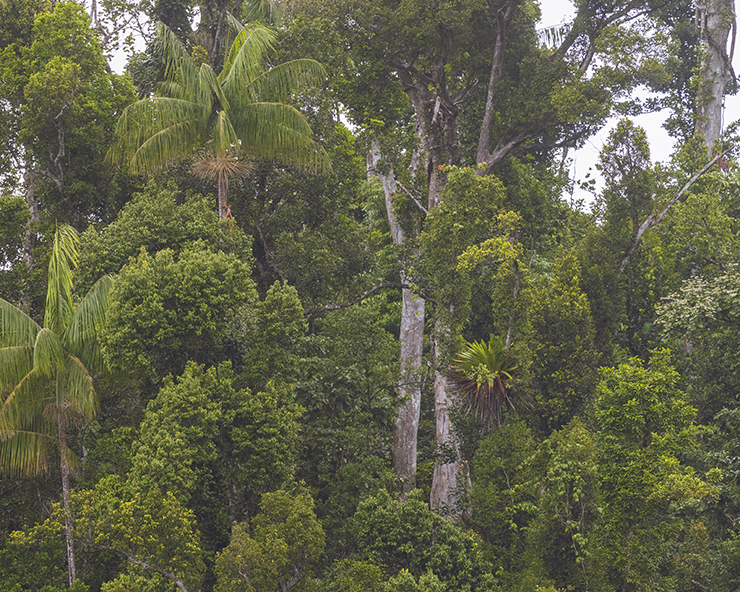
This near-mythical parrot has captivated my subconscious from the moment I learned of its existence. A massive (largest member of the Amazona group of parrots) creature with searing red eyes set in a sea of blue, brown, and purple, the Imperial Parrot (Amazona imperialis) is a recluse of higher elevation forest on the island of Dominica.
Intimately linked to mature forest on a single island, the species – by this logic alone – faces an uphill battle. We are all too familiar with our predilection for putting chainsaw to tree, and while Dominica has remained largely green overall, it has been made to pay the price for the transgressions of other countries: the ever-strengthening hurricanes of the Atlantic invariably slam into the islands of the Caribbean, with Category Five winds whipping hundred-year-old trees to shreds. Evidence of this is visible even before touching down on the island; the approach to the Douglas-Charles Airport in the northeast involves a breathtaking descent through verdant valleys – upon closer inspection, however, one would notice the tops of all trees completely bare.
The Imperial Parrot is actually one of two endemic parrots on Dominica, the other being the Red-necked Parrot. The latter is much more common, but still listed as Vulnerable according to the IUCN. Both species face the same threats, but the Red-necked Parrot has proven to be more adaptable in terms of habitat and food; as it can often be found making use of agricultural land to feed on citrus. Consequently, its numbers are a bit higher, so is the probability of seeing one. Although many of the birds on the island were new for me, the Imperial Parrot remained the holy grail!
Chances of seeing this bird were already slim given the dismal population status (estimates are between 40-60 individuals!), but we were undoubtedly there to give it our best shot. Hiking into the utterly majestic Morne Diablotin National Park takes one’s breath away; the haunting calls of Rufous-throated Solitaire and erratic flashes of Plumbeous Warbler in the wet, deep green foliage may tempt all but the most focused. Here, there is a single goal.
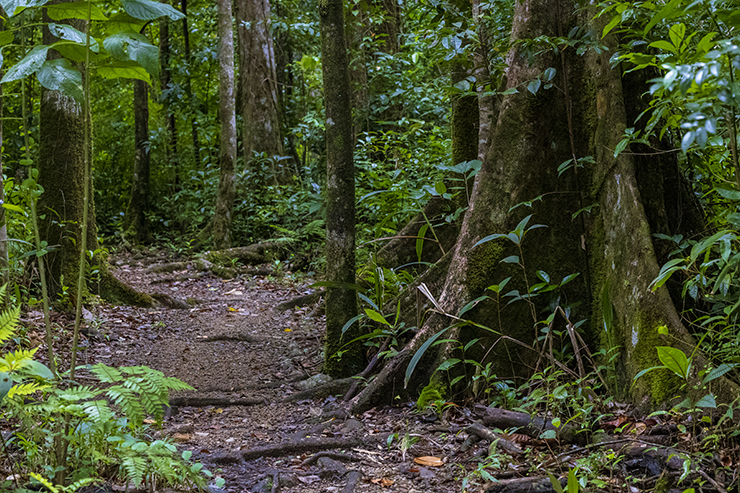
Aside from the birds, the forest in the Morne Diablotin National Park is tremendously beautiful. Wise, mature trees, mossy buttress roots plunging into dark, moist soil, and massive broad leaves nodding to and fro in refreshing air begets a meditative and reverential experience. Photo courtesy Joanne Husain.
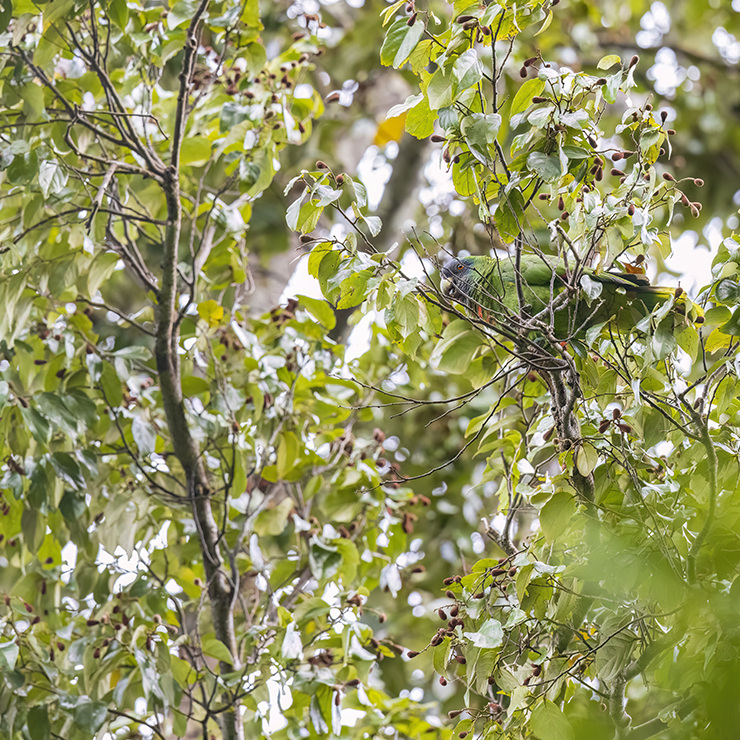
Some movement overhead was definitely a parrot – this was the first of several Red-necked Parrots that we would encounter throughout the day.
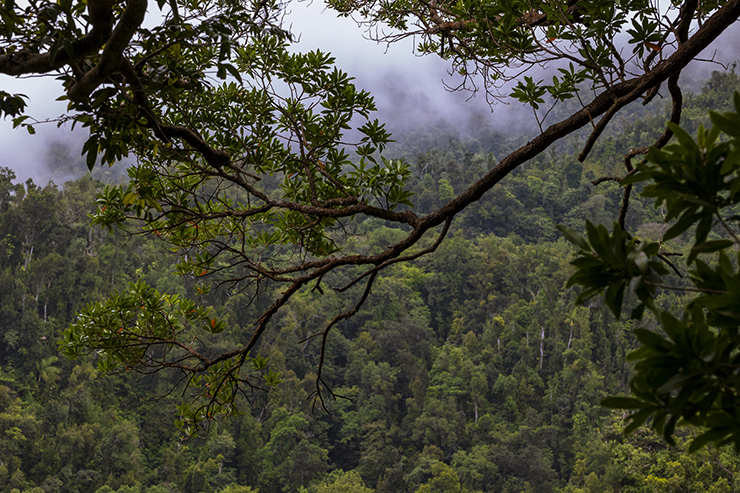
Naturally, we imagined our perfect perch for our intended target. Photo courtesy Joanne Husain.
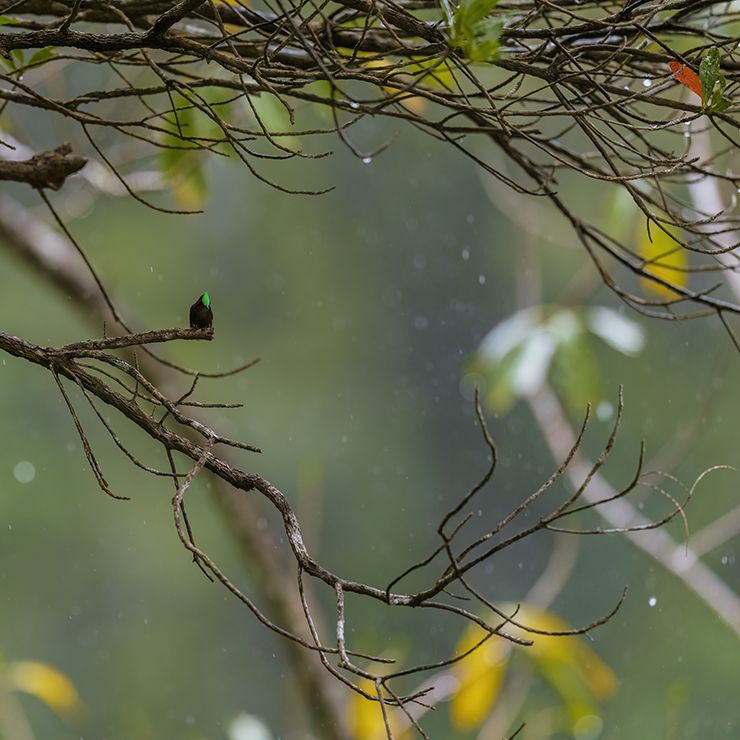
Periodically, an Antillean Crested Hummingbird would pay us a visit, perhaps checking in to ensure that we hadn’t lost all hope.
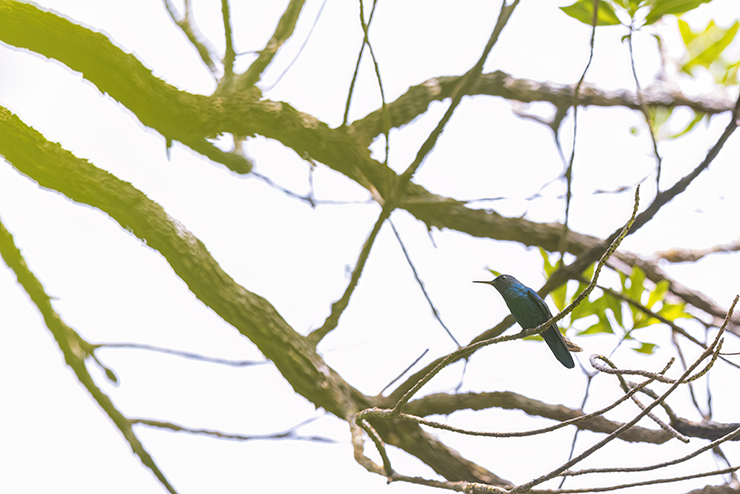
A Blue-headed Hummingbird graced us with his presence, our first sighting of this species for the trip.
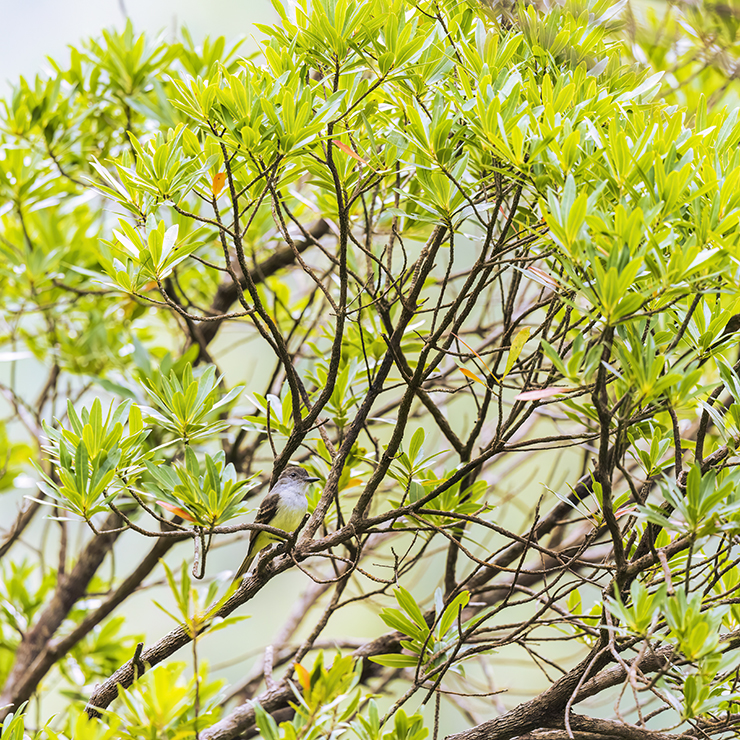
Even though this Lesser Antillean Flycatcher perched nearby, it still took a bit of effort to locate.
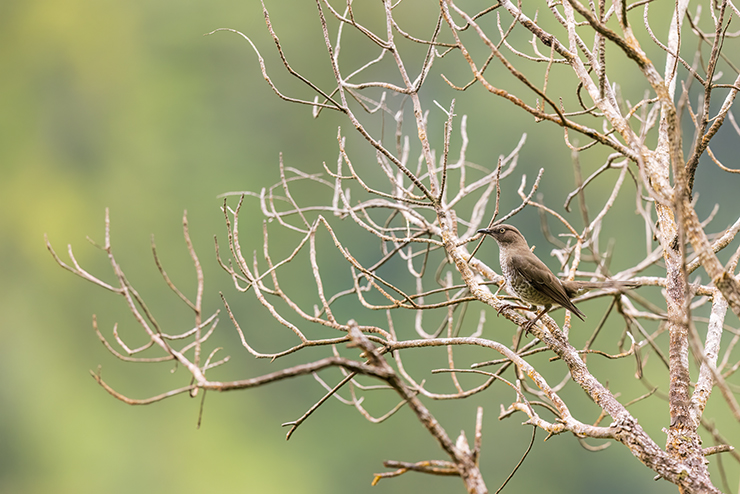
Another bird perched somewhere that was earmarked for parrots, this one a Scaly-breasted Thrasher.
There are several vantage points along the moderately steep slopes which allow for a considerable field of view, encompassing much of the valley and adjacent slope. We were instructed to each take a position that would not obstruct any other eager eyes, scan the vegetation on the opposite slope, and be ready for action at any time. And so we began, two dozen eyes scouring distant palms, stumps, and bromeliads for any sign of the Sisserou. Quietly, binoculars affixed to faces, breaths measured, we existed in this space. Periodically, clouds rolled in, each time seemingly dropping the temperature further. From time to time our hearts would race as pairs of Red-necked Parrots flew past. They all were frustratingly always flying away from us, except for one pair that I had been following in my binoculars. They turned around and began flying back in the direction from where they had come. The encounter was exceptionally brief, I thought – but I eventually revisited the concept of “brief” by the day’s end.
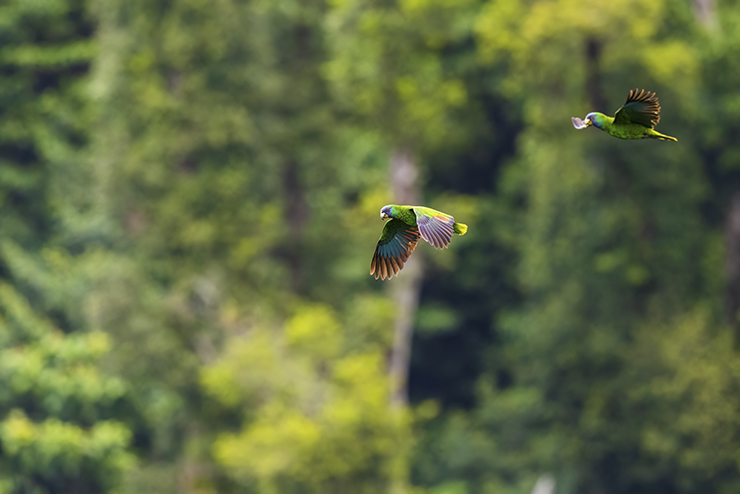
Red-necked Parrot
Hours passed, and our guide, ever optimistic, assured us that all was definitely not lost. The weather and visibility were still good, therefore our outlook remained positive. But some folks were growing tired and hungry; we contemplated a quiet return to our vehicles. “Ten more minutes and we’re done” was the decision. At once, as if in response to this utterance – a most distinctive metallic call drifted across the valley. “That’s it! That’s the [insert age-appropriate word here] imperial!”
I had never before seen people scramble and lose their footing whilst stationary, but there’s a first for everything. A surge of vigour washed over us, and we were again scanning with the fervency of having just arrived.
But where were they? I hadn’t a clue. They were definitely low down in the valley, probably beyond our line of sight. Now, however, there was absolute proof that the birds (at least one) were present. We were sharing the same air as a creature hanging on to existence on this planet; that alone was magical.
I don’t even know how much time passed after this initial contact. Occasionally, Red-necked Parrots would fly past as they had been doing all day; now, however, their presence seemed to infuriate the group a bit. Spines arched, shoulders burned, but we persisted. Almost everyone was glued to their binoculars, looking at every branch, any possible perch a parrot may prefer. I, in typical esoteric manner, was basking in the unseen presence of this incredible bird, contemplating what these hills may have seen, and what they may have endured during the devastating hurricanes of a few years ago. Occasionally, my mind would be completely devoid of thought and I’d just be looking at the Red-necked Parrots drift past, their yellow-tipped tail feathers contrasting with the greens of the distant hills. Until I saw a pair of parrots without any yellow. Moreover, they were dark birds!
Of course, I was the only one to see this. One of the birds alighted on a stump near a giant bromeliad, and I raised my camera and fired off a few shots. It was incredibly distant, I couldn’t discern even a basic bird shape through my camera viewfinder. When I pulled it up on the camera LCD, and zoomed right in, there was no doubt. In a sequence of photos, I had captured the holy grail, the bird of all birds, twisting and turning across a stump. Using its bill and feet as locomotion as all parrots do, here was the almost vulture-sized Imperial Parrot no less than a kilometre away!
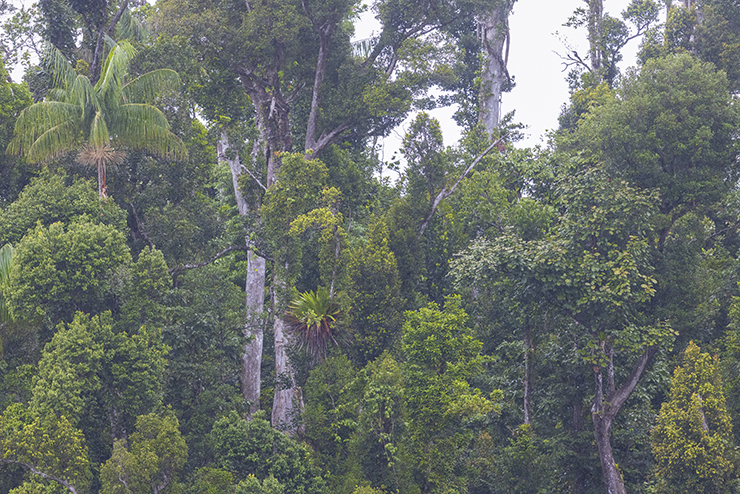
You can squint all you want, I just ask that you believe me when I say that there is an Imperial Parrot in this frame.

How are my directions? Find the double trunk, then go to the large bromeliad to the right of the right side trunk, and then follow the one o’clock stick. That dark blob – that’s your Imperial Parrot. A zoomed-in version of this same image is below. Did you find it?
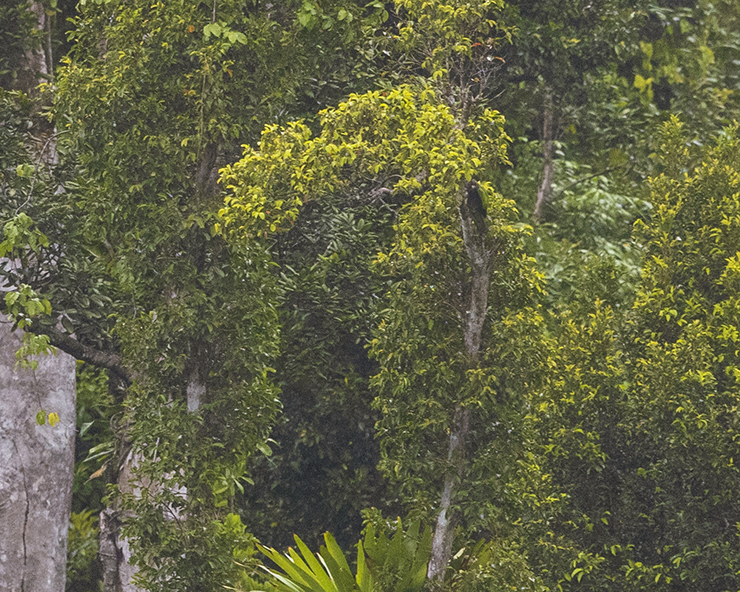
Unsurprisingly some were hesitant to believe my proclamation – but soon enough I was pointing out the bromeliad and stump over and over. In a poignant twist of the plot, within those few moments, the parrot quietly slipped out of view. Sure enough, even with stellar directions to the perch and all eyes wholly focused, even with the scope zeroed in on maximum power – there was no parrot. As I mentioned earlier, I am still grappling with the definition of “brief”.
Such is the poetry of nature, her messages in all forms and fashions. Most of the people I’ve spoken with who have been on this mission to look for this species ended up leaving empty handed. I only saw it because I was looking at the entire scene and not limb by limb. Not only am I incredibly grateful for the fleeting glimpse I was afforded, I am determined to communicate the transience and fragility of this species, threatened by the terrifying prospect of complete erasure. Thankfully, Dominica has a legacy of conservation, with some measures coming into effect from as early as the 1980’s. The populations of both endemic parrots have increased over the years thanks to these efforts, but it is a constant task especially with warming oceans pushing stronger hurricanes.






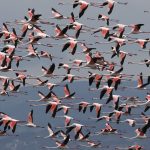



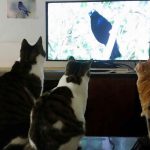


Good job Faraaz!
My sighting was equally fleeting, and perhaps more frustrating, because I couldn’t even attempt a photo. In 2019 I was bicycling up to Syndicate to make my attempt, and the road was much steeper than I expected and, of course, it was very hot out. So, some distance below the summit, I stopped to rest for a while in the too-infrequent shade of a big tree. Maybe 20 minutes later, I heard the sounds of what could only have been parrots of some sort, and opened my eyes just in time to see two large birds flying past. They were well-lit and fairly close, so the purplish underparts really stood out. But I was conflicted for a long time because I was at a somewhat lower elevation than they would normally be found, and they disappeared fairly quickly, heading in a direction that they probably shouldn’t have been going. But birds can do whatever they want, right? Eventually, I decided to trust my eyes and decided that they couldn’t have been Red-Neckeds. Since I will most certainly never get another chance, I am counting that species! 🙂
Thanks, Michael! I wouldn’t dream of bicycling up that road! It goes up, and up, and up. I’m getting tired just thinking of it, haha. I’m sure those were the Imperials, the yellow tail-tips of the Red-neckeds really stand out especially in flight. So I’d count them also!
Epic!
Wow, what a trip! Thanks for sharing your experience and happy you saw such a fantastic bird. I would love to do that trip.